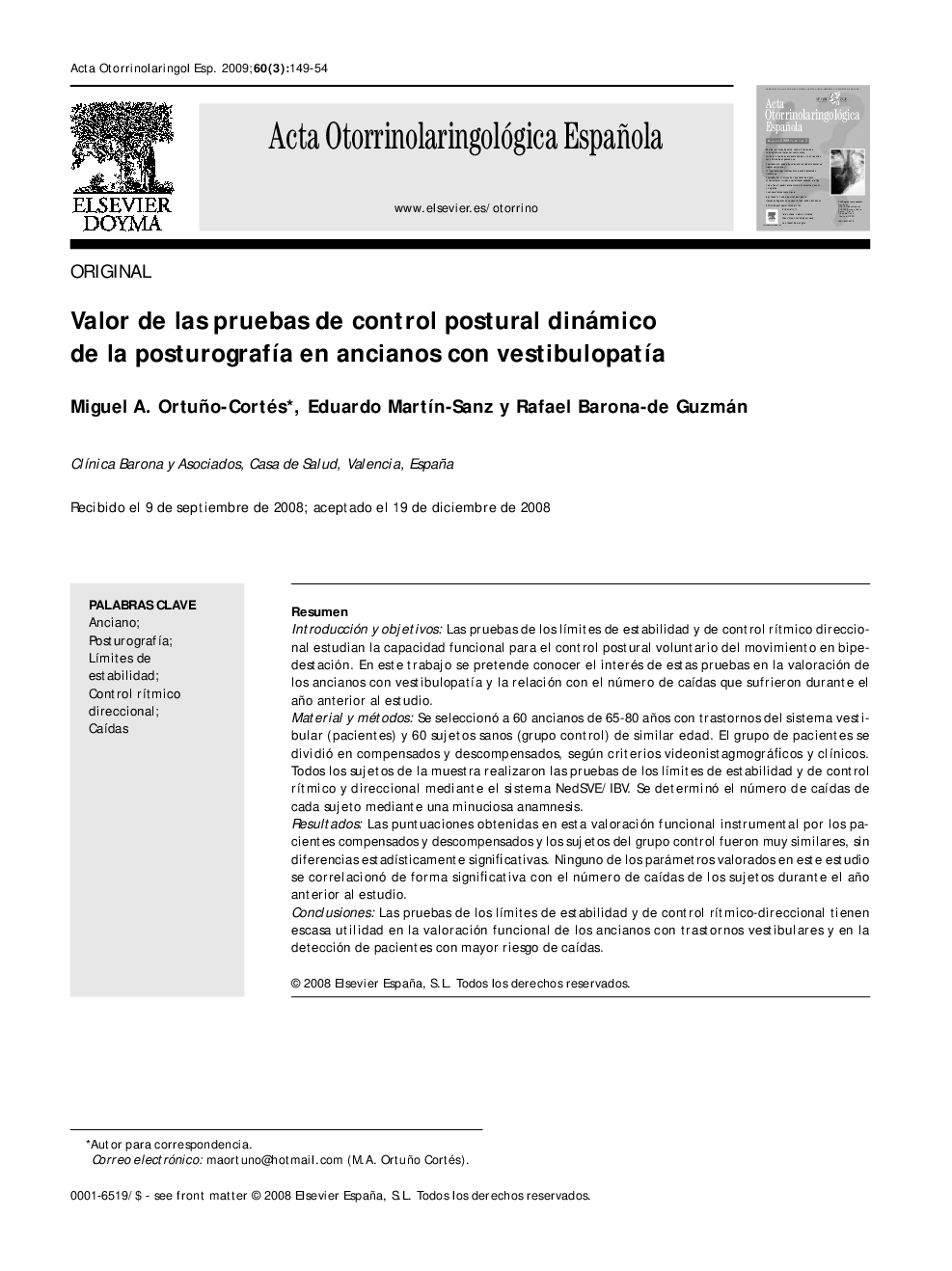| کد مقاله | کد نشریه | سال انتشار | مقاله انگلیسی | نسخه تمام متن |
|---|---|---|---|---|
| 4102544 | 1268834 | 2009 | 6 صفحه PDF | دانلود رایگان |

ResumenIntroducción y objetivosLas pruebas de los límites de estabilidad y de control rítmico direccional estudian la capacidad funcional para el control postural voluntario del movimiento en bipedestación. En este trabajo se pretende conocer el interés de estas pruebas en la valoración de los ancianos con vestibulopatía y la relación con el número de caídas que sufrieron durante el año anterior al estudio.Material y métodosSe seleccionó a 60 ancianos de 65-80 años con trastornos del sistema vestibular (pacientes) y 60 sujetos sanos (grupo control) de similar edad. El grupo de pacientes se dividió en compensados y descompensados, según criterios videonistagmográficos y clínicos. Todos los sujetos de la muestra realizaron las pruebas de los límites de estabilidad y de control rítmico y direccional mediante el sistema NedSVE/IBV. Se determinó el número de caídas de cada sujeto mediante una minuciosa anamnesis.ResultadosLas puntuaciones obtenidas en esta valoración funcional instrumental por los pacientes compensados y descompensados y los sujetos del grupo control fueron muy similares, sin diferencias estadísticamente significativas. Ninguno de los parámetros valorados en este estudio se correlacionó de forma significativa con el número de caídas de los sujetos durante el año anterior al estudio.ConclusionesLas pruebas de los límites de estabilidad y de control rítmico-direccional tienen escasa utilidad en la valoración funcional de los ancianos con trastornos vestibulares y en la detección de pacientes con mayor riesgo de caídas.
Introduction and objectivesThe stability limits and rhythmic weight shift tests study the functional capacity to achieve voluntary postural control of movement in the standing position. The objectives of this paper are to know the interest of these tests in the evaluation of elderly people with vestibular disorders and their relation with the number of falls suffered during the year prior to the study.Material and methodsSixty elderly people (65-80 years old) with vestibular disorders (patients) and 60 healthy subjects (control group) of similar age were selected. According to videonystagmographic and clinical criteria, the patients group was divided into compensated and decompensated. All the subjects in the sample performed the stability limits and rhythmic weight shift tests with the NedSVE/IBV system. The number of falls of each subject was determined by a meticulous anamnesis.ResultsCompensated patients, decompensated patients and the control group had similar scores in this instrumental functional evaluation, without any statistically significant differences. None of the parameters assessed in this study correlated statistically with the subjects’ number of falls during the year prior to the study.ConclusionsThe stability limits and rhythmic weight shift tests are of little utility in the functional evaluation of the elderly with vestibular disorders and in the detection of patients with greater risk of falls.
Journal: Acta Otorrinolaringológica Española - Volume 60, Issue 3, June 2009, Pages 149–154